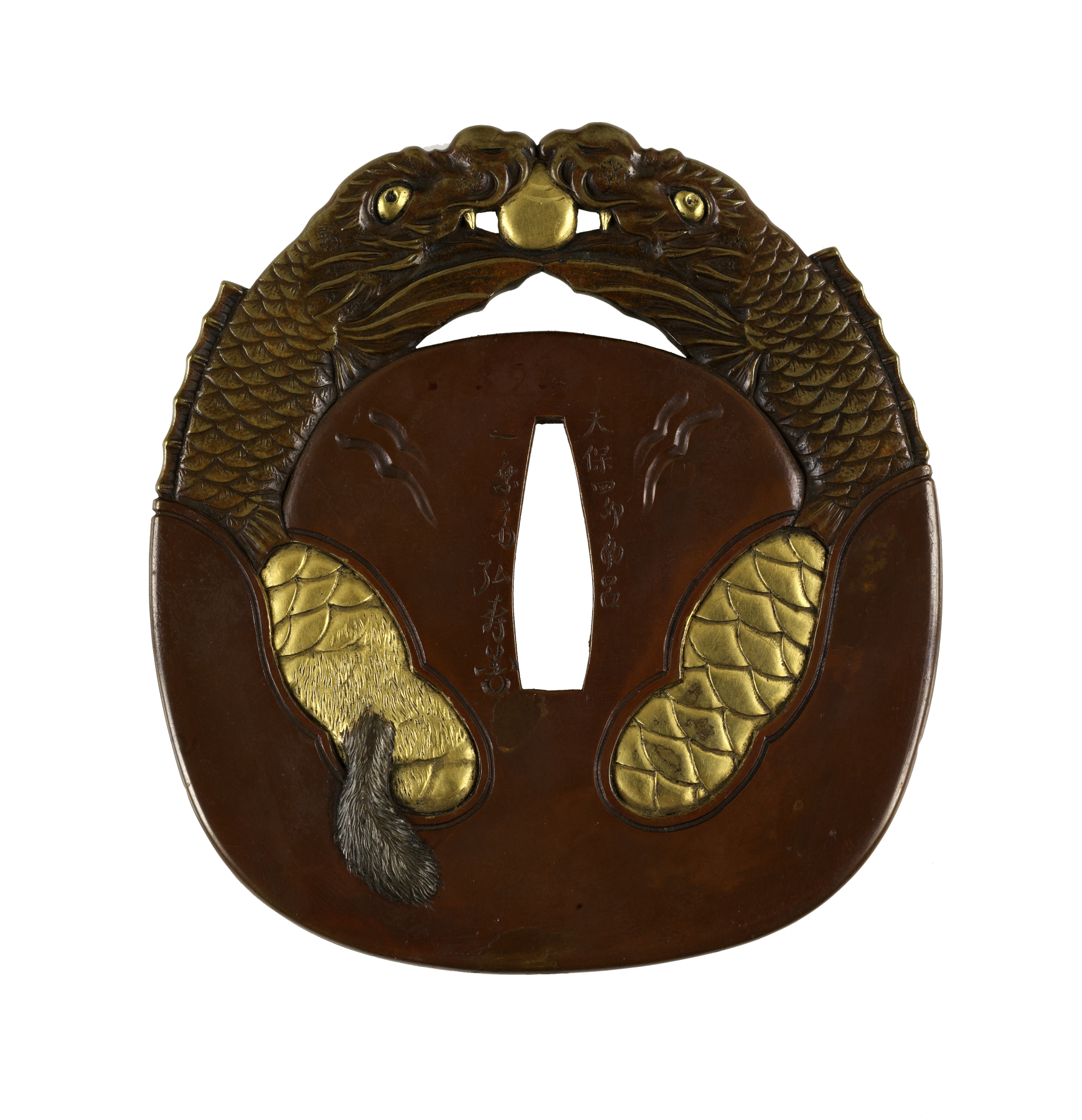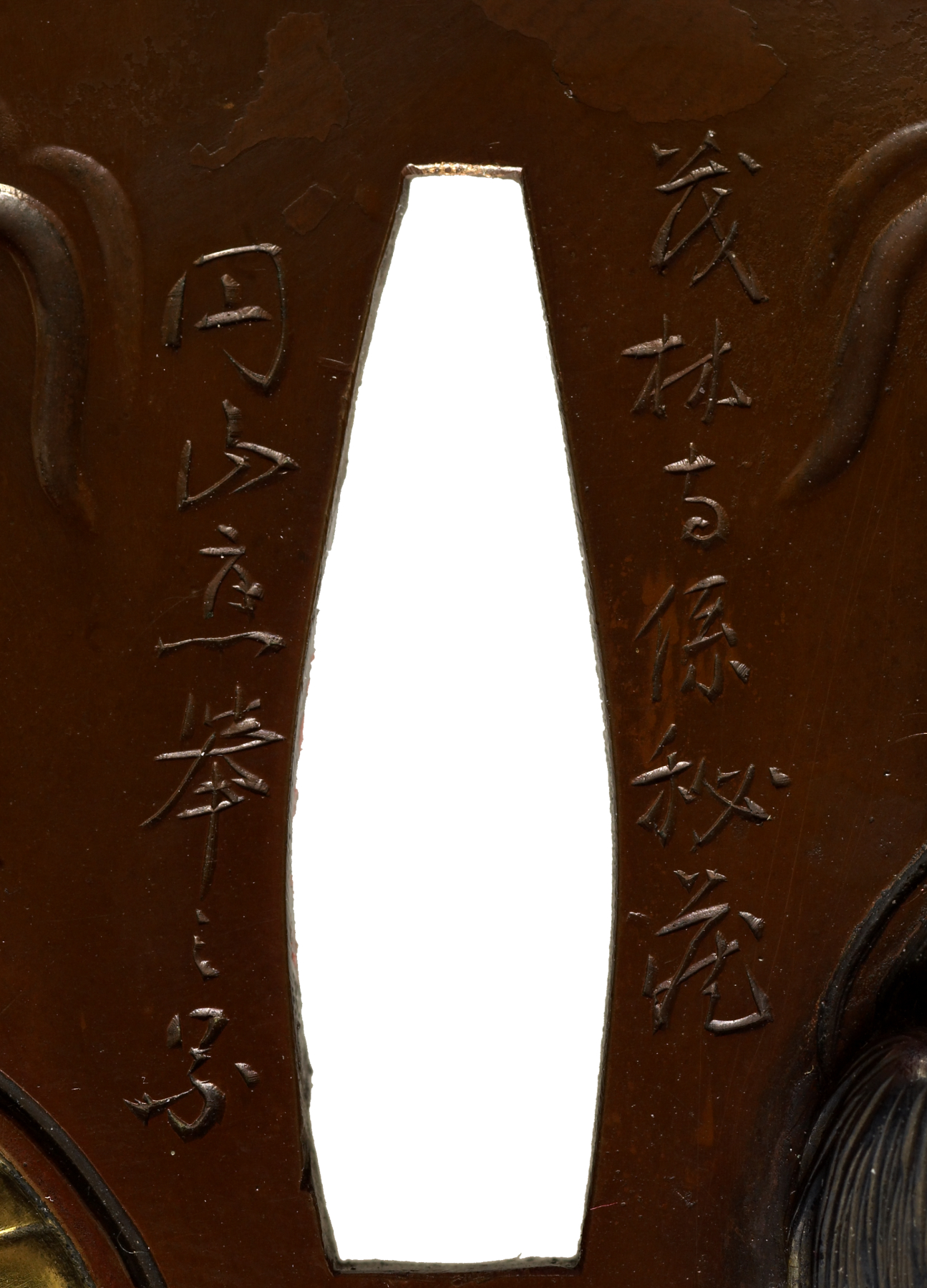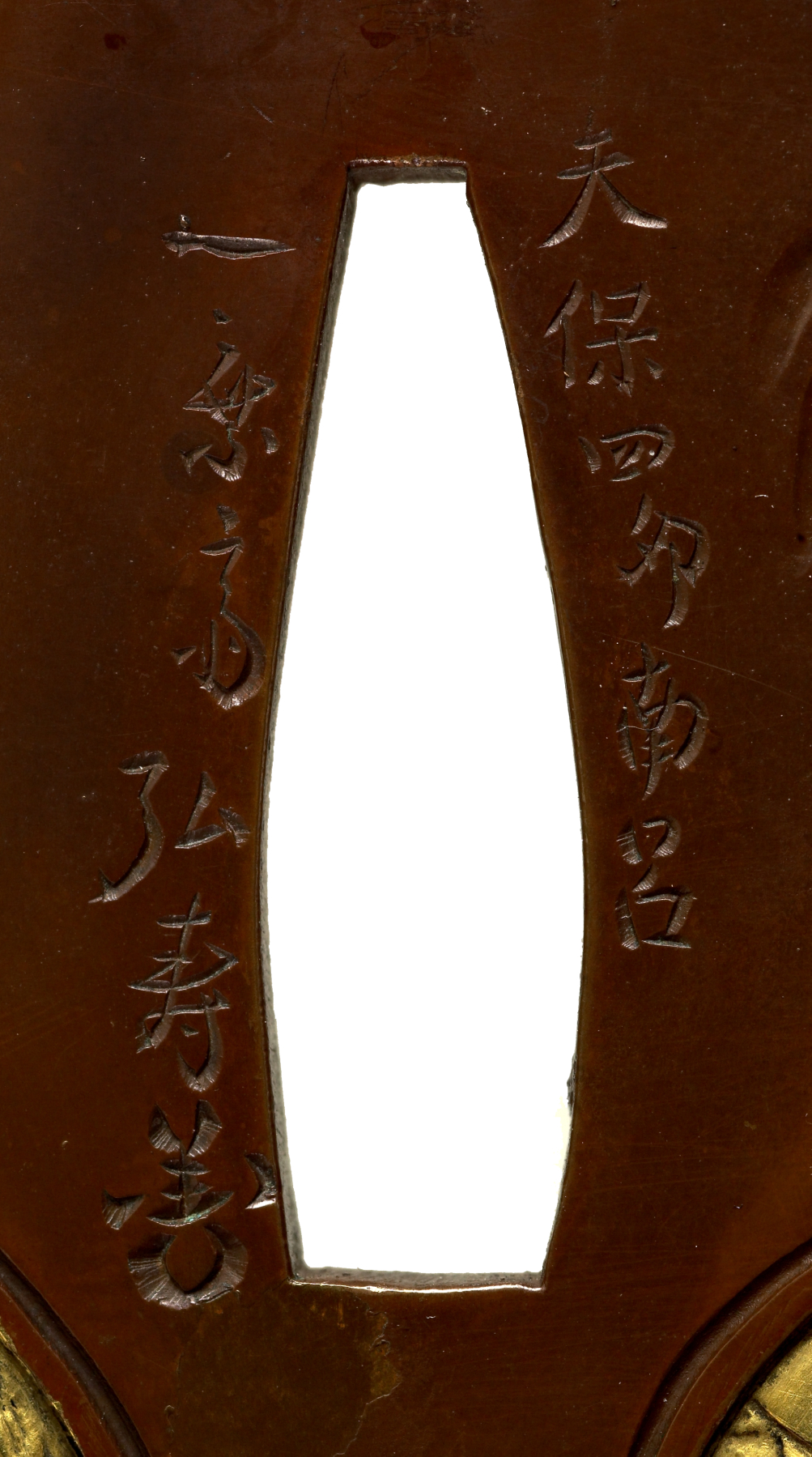Tsuba with a Fox in Buddhist Robes Inside a Gong ("Mokugyo")
(Japanese Military Armor)
This tsuba is in the shape of a wooden gong known as a mokugyo. Two fish heads meet at the top of the tsuba. This is the most traditional shape for the gong. These types of gongs are used in Buddhist rituals, often as part of chanting or reciting rituals. On the right, a fox in Buddhist clerical cloaks sits within the gong. The fox's tail is shown coming out of the other side of the gong on the back on the tsuba. Anthropomorphized foxes commonly appear in Japanese folk tales.
Provenance
Provenance (from the French provenir, 'to come from/forth') is the chronology of the ownership, custody, or location of a historical object. Learn more about provenance at the Walters.
Henry Walters, Baltimore [date and mode of acquisition unknown]; Walters Art Museum, 1931, by bequest.
Geographies
Japan, Tokyo (Edo)
(Place of Origin)
Japan, Mito (Place of Origin)
Measurements
H: 3 1/4 in. (8.3 cm)
Credit Line
Acquired by Henry Walters
Accession Number
In libraries, galleries, museums, and archives, an accession number is a unique identifier assigned to each object in the collection.
In libraries, galleries, museums, and archives, an accession number is a unique identifier assigned to each object in the collection.
51.394








